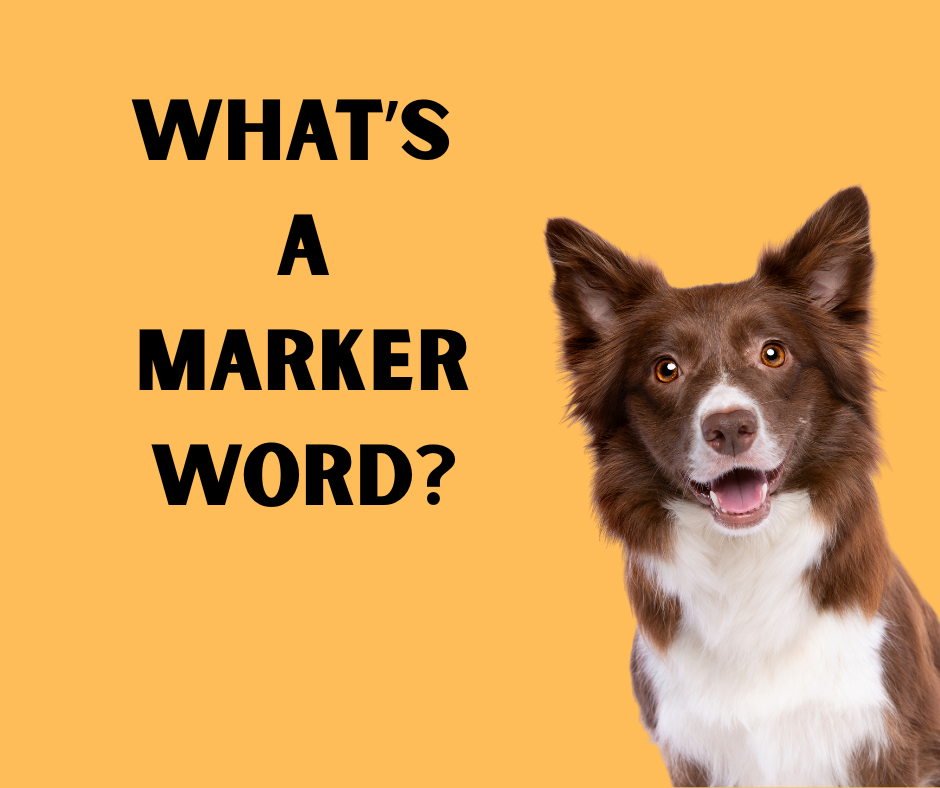What is a Marker Word?
One of the most effective and often overlooked tools in dog training is something straightforward: a marker word. It’s your instant way of saying, “Yes! That’s exactly what I wanted!” Think of it as a verbal high-five that tells your dog, nailed it.
When used correctly, a marker word can dramatically speed up learning, boost your dog’s confidence, and make your training sessions more fun and productive for both of you.
But here’s the key: timing. For your dog to truly understand what they did right, the marker needs to occur immediately after they exhibit the behavior. Teaching “sit”? Mark the instant their butt hits the ground. Practicing recall? Say your marker the second they reach you. For longer actions like staying put or going potty, use the marker when the task is fully complete. Many people use phrases like “good boy” or “good girl,” and while those are great for general praise, they’re often used so casually that they lose clarity. That’s why having a dedicated marker word, something concise and used only during training, can make a significant difference. It keeps your message consistent and easy for your dog to understand.
What does a Marker Word do?
1. Creates Clear Communication
Dogs don’t understand our language, so we need to find ways to tell them when they’ve done something right. A simple way to do this is by using a marker word like “yes” or a click paired with something they love, usually food. Over time, your dog learns that hearing the marker means a treat is on the way, so they’ll start to connect the good behavior with the reward that follows.
2. Connects Action with Reward
When you’re training, timing is everything. You want to reward the behavior as quickly as possible, ideally within a second. But getting that treat to your dog at the exact right moment can be tricky. That’s where a charged marker word comes in. It acts as a bridge, letting your dog know that they’ve done something right, even if there’s a slight delay before the treat arrives.
3. Helps Your Dog Learn Faster and More Precisely
A well-timed marker word helps your dog understand exactly what they’ve done right, speeding up the learning process. It’s like a cheat code for training! Plus, it’s great for refining behaviors, especially when you’re using shaping techniques to teach something new.
4. Builds Trust and Strengthens Your Bond
Using a clear marker word not only makes training more effective, but it also builds positive associations for your dog. Every time they hear the marker, they know they did something right and that a reward is coming. This makes training fun and strengthens the bond between you and your dog.
Pro Tip –
When introducing a marker word or sound to your dog, it’s essential to ensure that your dog clearly understands its meaning. This foundational step, known as “charging your marker,” is a powerful way to establish the marker as a valuable signal for reward. Think of it like charging a battery, you’re building the marker’s power by associating it directly with something your dog loves: treats!
To effectively charge your marker, start with small, soft treats about 1/4 inch square in size. They should be tasty but not too crumbly, making them easy for your dog to enjoy without distraction. Keep the treats hidden from view, but within reach. Now, say your designated word or click your clicker, then pause—just a split second—before delivering the treat. Repeat this process at least 20 times to create a strong, reliable association between the sound or word and the reward.
Once you’ve repeated this enough, it’s time to check if your dog has grasped the marker’s meaning. Wait for your dog to disengage, perhaps looking away or relaxing. When you make the marker sound or click, observe if your dog responds, maybe they look back at you or flick their ears in your direction. If they do, congratulations! Your dog has likely learned that the marker signals a reward is coming. Now, you’re ready to incorporate this new understanding into your training sessions.
Be sure to use this initial exposure only once per session. After that, avoid using the marker solely to grab your dog’s attention. The marker is a cue for a desired behavior, not an attention-getter.
If you’re using a clicker (which I highly recommend in addition to a verbal marker), it creates a clear agreement between you and your dog: when you click, a treat follows. However, if you prefer to use only your voice as a marker, that works too just ensure consistency in your approach, and your dog will quickly learn what to expect!
Good Luck and Happy Training!
– Todd “Coach Wags”

